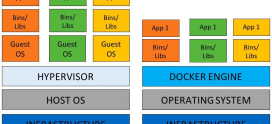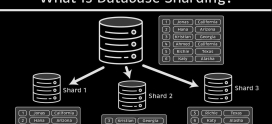
How Machine Learning Enhances Load Testing
Introduction
Have you ever clicked on a website only to experience endless loading times, crashes, or unresponsive pages? If so, you’re not alone. Many of us have encountered frustrating digital experiences, and it can feel like a black hole of time and patience. It’s annoying, right? You wonder who’s responsible for ensuring that the online services you rely on work smoothly, especially during peak times like sales events or product launches.
In today’s digital world, where every click counts, load testing is becoming increasingly essential. But here’s the catch: traditional methods of load testing can often fall short. They might not accurately represent real-world scenarios, leaving you still in the dark regarding performance issues. Thankfully, this is where machine learning steps in as a game-changer. Imagine having a reliable teammate that not only predicts problems before they occur but also helps optimize your experience with precision. Sounds promising, doesn’t it?
In this article, we’ll explore how machine learning enhances load testing, providing you with insights into innovative solutions tailored to today’s web dynamics. Whether you’re a developer, a business owner, or even just someone interested in how technology works, there’s something here for you. So, sit back and let’s dive into the fascinating world of load testing enhanced by machine learning!
What is Load Testing?
Before we delve deeper into the role of machine learning, let’s clarify what load testing actually is. Load testing is a type of performance testing that simulates a user load on a software application to see how it behaves under stress. Think of it as a test drive for a car; just as you want to see how the car handles various speeds and road conditions, you need to see how your application performs under different user loads.
This testing helps identify bottlenecks and responsive issues, ensuring that your digital services can handle traffic surges gracefully. In essence, it’s vital for delivering a smooth and reliable user experience.
Challenges in Traditional Load Testing
Despite its necessity, traditional load testing often comes with its own set of challenges:
- Inaccuracy: Simulated scenarios may not accurately reflect real-world user behavior.
- Limited Scalability: As the number of users increases, it may become difficult to accurately simulate the load.
- Lack of Flexibility: Traditional methods can be rigid, making it tough to adapt to new usage patterns or technologies.
These issues can lead to frustrating downtime or performance lags that affect user satisfaction, which is where machine learning comes into play.
Machine Learning: A Brief Overview
Machine learning (ML) is a subset of artificial intelligence (AI) that allows systems to learn from data and improve over time without human intervention. It operates much like how we learn from experience—making adjustments and predictions based on previous outcomes.
In the context of load testing, machine learning has the ability to analyze vast amounts of data, identify patterns, and predict future behaviors. This capability can be transformative for very dynamic and high-traffic environments.
How Machine Learning Enhances Load Testing
Predictive Analytics
One of the most significant benefits of machine learning is its predictive capability. By analyzing historical data regarding user behavior and load patterns, machine learning algorithms can forecast peak times and potential problems. For example, if a retail website sees a spike in traffic on Black Friday year after year, machine learning can help predict that surge and prepare the system accordingly.
Dynamic Load Simulation
Instead of relying solely on predefined user scenarios, machine learning can dynamically simulate user loads based on real-time data. This allows for a more realistic testing environment that reflects actual user behavior, resulting in more accurate performance evaluations. It’s like having a weather app that adjusts the forecast based on the latest conditions.
Automated Issue Identification
Imagine having a diligent assistant that flags potential issues before they become significant problems. Machine learning can automatically identify abnormal patterns during load testing, such as sudden spikes in response times or errors. This way, developers can focus on fixing issues rather than running tests manually.
Resource Optimization
Machine learning doesn’t just help identify problems; it also provides solutions. By analyzing how resources are utilized during load testing, machine learning algorithms can offer recommendations for optimizing resource allocation, like increasing server capacity during peak times or distributing loads more efficiently. It’s like having a coach who knows exactly when to push the team harder and when to rest.
Continuous Learning and Improvement
With machine learning, the system continually learns from each load test, refining its parameters and predictions for future tests. This means that each test improves upon the last, leading to a robust and resilient application over time. It’s a cycle of constant enhancement.
Real-World Applications: A Case Study
Let’s look at a real-world application of machine learning in load testing: the online retail giant, Amazon. During major sales events like Prime Day, Amazon must prepare for millions of concurrent users. By utilizing machine learning for load testing, Amazon can accurately predict traffic patterns based on historical data, simulate dynamic user scenarios, and optimize resources accordingly. This approach enhances the user experience significantly, reducing downtime and ensuring smooth transactions.
Benefits of Machine Learning in Load Testing
- Enhanced User Experience: By anticipating issues, companies can minimize downtime and ensure a better experience for users.
- Cost Efficiency: Predictive analytics helps allocate resources wisely, potentially saving companies money by avoiding over-provisioning.
- Faster Release Cycles: Continuous improvements allow for quicker iterations and releases, getting products to market faster.
Key Features to Consider When Implementing ML in Load Testing
When looking to integrate machine learning into your load testing processes, here are a few factors to keep in mind:
- Integration Capabilities: Ensure that the machine learning tools can integrate seamlessly with your existing tech stack.
- Scalability: Choose solutions that can scale as your application and user base grow.
- Data Security: Protect user data by selecting tools that comply with the latest security standards.
- Customer Support: Reliable support can help troubleshoot issues that arise during implementation and use.
FAQs
What is the main goal of load testing?
The main goal of load testing is to determine how a system behaves under normal and peak traffic conditions to ensure its stability and responsiveness.
How does machine learning improve load testing processes?
Machine learning enhances load testing by providing predictive analytics, dynamic load simulation, automated issue identification, and offering optimization recommendations.
Can small businesses benefit from machine learning in load testing?
Absolutely! Small businesses can leverage machine learning to optimize their applications, ensuring cost-effective solutions and improving user experience.
Is machine learning expensive to implement in load testing?
While initial investments can vary, the long-term benefits often outweigh the costs by improving efficiency and reducing the need for extensive manual testing.
What tools are commonly used for machine learning in load testing?
Some common tools include Apache JMeter, LoadRunner, and Salesforce, which incorporate machine learning features to enhance load testing capabilities.
Conclusion
In a world where digital presence is paramount, load testing is not just an option—it’s a necessity. Adopting machine learning approaches to enhance this process can significantly improve the reliability and performance of your web applications. By predicting potential issues, optimizing resource usage, and constantly learning from past experiences, machine learning is set to transform the landscape of load testing. With these tools at our disposal, we can ensure that our online Services deliver the seamless experience that users expect and deserve. As technology evolves and user behavior becomes more complex, integrating machine learning into load testing is not just a smart move—it’s essential for staying competitive in a rapidly changing digital marketplace.
So, whether you’re developing a new application, optimizing an existing service, or simply trying to ensure your website remains accessible during peak traffic, embracing machine learning in load testing will equip you with the insights and tools needed for success. Here’s to smoother, faster, and more reliable digital experiences for everyone!









